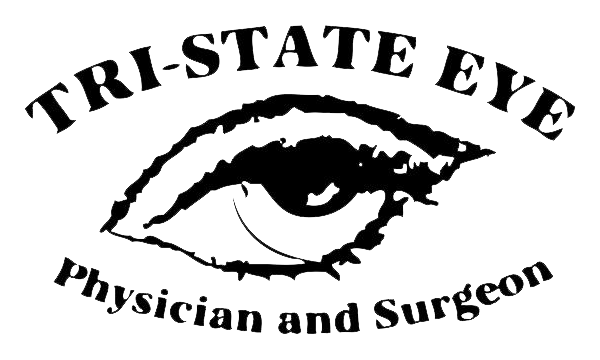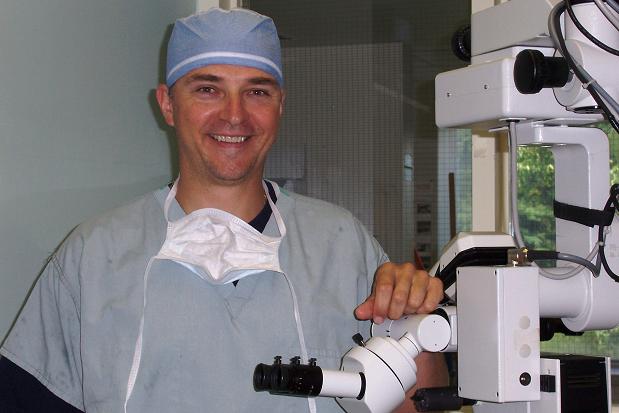Lasik Surgery
LASIK Surgery
What Is LASIK?
LASIK is actually an acronym which stands for LASer In-situ Keratomileusis, which means "To shape the cornea, within, using a laser." The goal of LASIK surgery is to eliminate or reduce the patient's dependence on glasses or contact lenses.
LASIK Background
Before LASIK surgery was conceived, the main procedure for correcting vision problems was PRK, or Photo Refractive Keratectomy. In the 1980's scientists began looking at lasers to help improve vision. The PRK procedure is used for treating near sightedness by reshaping the surface of the cornea using a laser called an Excimer Laser. The Excimer laser is so precise, and safe, that it would take 200 pulses to cut through a single strand of human hair. For the PRK procedure the surgeon would first remove the epithelium, or outer most layer, with computer controlled accuracy. The surgeon would then remove a predetermined amount of tissue using the Excimer Laser. The PRK procedure allowed the reshaped cornea to allow light to focus better and more directly. However, the PRK procedure works best with patient's with low to moderate refractive error, which drastically diminished the number of individuals of the population who could have this surgery. In 1991 surgeons began to use to the Excimer laser to reshape the inner tissue of the cornea and hence the term LASIK. The benefits of LASIK over PRK were phenomenal, and the majority of refractive surgery done today is LASIK.
LASIK Surgery Procedure
During LASIK surgery a thin flap of corneal tissue is folded back using an instrument called a microkeratome. Once the corneal flap has been carefully folded back, the cool light of the Excimer laser is used to reshape the cornea. The Excimer laser is so precise that it can focus up to 0.25 microns in accuracy. Depending on what your doctor determines is the best for you individually; LASIK surgery is for correcting nearsightedness, farsightedness, and astigmatism. For correcting nearsightedness the cornea is made flatter in shape, for correction of farsightedness the cornea is made steeper in shape, and for correction of astigmatism the cornea is made spherical in shape all by utilizing the Excimer laser. Once this has been completed the corneal flap is gently put back into place without the need for stitches as it will bond on its own. LASIK surgery allows the reshaped cornea to focus light rays more directly to the retina, thereby reducing or eliminating the dependence for use of contact lenses or glasses. Below is a diagram of exactly what the LASIK surgery procedure looks like from start to finish.

Benefits of LASIK Surgery
The benefits of having LASIK surgery over having PRK surgery is that LASIK surgery treats the inner tissue of the cornea where PRK surgery treats the surface of the cornea. Here are a few benefits that LASIK surgery has over PRK surgery.
• With LASIK surgery, higher levels of refractive errors can be treated
• Because LASIK surgery does not require the outer layer of the cornea to be removed like in PRK surgery, there is less post-operative discomfort experienced.
• With LASIK surgery your functional vision rapidly returns within 12 to 24 hours after having surgery. PRK surgery may not have realizable results for several weeks to months after having surgery.
• After having LASIK surgery most patient's can return to work the next day, where patient's who have PRK surgery may require one to several days of recovery before returning to work.
• Because of the rapid recovery of functional vision, LASIK surgery can be performed on both eyes at the same time, or within a few days to a few weeks apart. PRK surgery is usually not performed on the second eye for several weeks to several months after the initial surgery.
• After having LASIK surgery post-operative medications may be required as per your doctor's request. With patient's who have had the PRK surgery steroid eye drops are often used and the patient is required to use them for an average of three months. With LASIK surgery all medications your doctor gives you post-operatively are generally discontinued within a week or two of surgery.
• With the PRK surgery procedure, intra operative risks are considered to be less than with LASIK surgery as PRK does not require manual experience with the microkeratome. LASIK does, like all procedures, carry some risks which your doctor can discuss with you.
• With LASIK surgery the post-operative discomfort experienced by the patient is very little if any because of the use of very effective topical anesthetics.
What You Should Know Before Having LASIK
It is important for you the patient that you understand the entire procedure and that you have all of your questions about the procedure before, during, and after answered so you understand the procedure clearly. It is also very important that you the patient understand the goal of LASIK surgery. Having LASIK surgery is for people who wish to eliminate or reduce their dependence on glasses or contact lenses. LASIK surgery does not always create 20/20 vision or 20/40 vision, and your doctor cannot guarantee your results even if you are the ideal candidate for LASIK surgery. With having LASIK surgery the normal aging process of your eyes is not altered. Most people after the age of 40 will need to wear corrective lenses of some sort, mostly reading glasses are required, whether they have had LASIK surgery or not. Patients over the age of 40 should consider that it may be necessary for them to have reading glasses after having LASIK surgery. Any other questions you may have about LASIK surgery you may contact our office or speak to the doctor when you have an appointment.
Dr. Palydowycz founded the Laser Vision Institute which was located in Riverdale, NJ. He, as well as the other doctors at Tri-State Eye, are highly skilled at evaluating and examining potential Lasik candidates. We at Tri-State Eye will give you a comprehensive examination and an un-biased opinion with regards to each individual's treatment options and potential for a successful outcome.
Not all patients are good candidates for Lasik surgery. The key is selecting the correct patients for the procedure and explaining the realistic expectations as well as the potential complications. You can be assured of an honest medical opinion. We are not trying to "Sell" you the procedure.
"Our Reputation Speaks For Itself"


